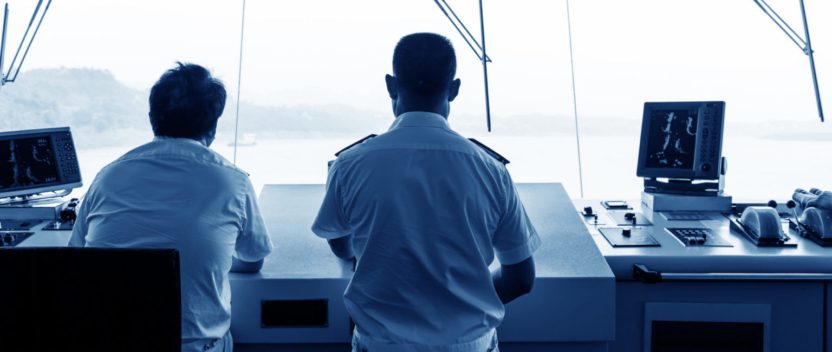Washington, we have a problem…
From the outside looking in, there has never been a better time to be in the satellite business. The industry is in the throes of a transition, with new constellation launches using new technologies on new launch platforms. But this is not the only change afoot.
The potential of tiny nanosats the ‘reusable’ rockets of SpaceX, Elon Musk’s other plan for a fleet of hundreds of satellites in low earth orbit and Google’s high altitude balloon project are teaching the incumbent satellite operators the meaning of the word ‘disruption’.
The rather larger issue for them, and users in maritime, aeronautical and land markets, is that we have been here before. In the 1990s, several similarly grand plans were announced, unveiled and duly crashed and burned. As CEO of satellite operator Iridium Matt Desch told the mobility session at Satellite 2015 in Washington, “We’ve seen this movie before and we know how it ends. You want to warn people, but you also want to watch it again.”
The mobile satellite providers, Inmarsat, Iridium, Thuraya and Intelsat are themselves spending billions of dollars on new systems that will hugely increase the available bandwidth to end users. Just as those plans come to fruition, the Silicon Valley brigade and others are advocating new approaches.
Many of these are focussed not on the maritime business but on providing cellular broadband services or backhaul, filling gaps in terrestrial broadband and fulfilling demand from ever more connected devices. Just like their forerunners, the new bunch are eyeing shipping with interest, and pointing out, perhaps with justification, that they can do it a whole lot better, and maybe cheaper too.
Thuraya CEO Samer Halawi told the same session the biggest mistake the MSS operators could make would be to act like a pre-internet telephone company and try to shut them out. “The important thing is that they don’t burn shareholder value. But the disruption is a good thing for innovation.”
There are technical barriers too. Desch believes the interest of Google or SpaceX is positive but is not so much about innovation. “It’s validation that we’re cool and yes, we may need more satellites but the breakthroughs are balanced by the numbers. You need a whole business model and all the infrastructure. It’s very difficult as a commercial operator to get through your first generation.”
Iridium returned to growth in maritime last year and the sector is growing strongly for Thuraya. But they and Inmarsat remain fiercely competitive. But while Iridium and Thuraya target the lower end in terms of price, Inmarsat has caught the High Throughput Satellite bug. The addition to its core L-Band services of the new GX platform begs the question, will users pay more and are more L-Band price increases just a fact of life?
“We have dropped prices over last three years,” says CEO Rupert Pearce. “Moving users away from pay as you go towards packages makes it much cheaper per megabyte. We don’t sell megabytes, we sell value and outcomes.” It’s a typically bullish statement that belies the fact that Inmarsat hit users of older products and basic packages with three waves of unbudgeted price increases.
Pearce believes the mission has changed. “Customers understand that $1 spent liberates $10. When it’s a fixed cost package with no bill shock, that’s a very benign environment and one which allows our partners to differentiate with value adds.”
Desch points out that Inmarsat’s price rises have been “very helpful to us as they got squeezed on the top end and felt more competition at the low end”. You have to give more to charge more. When people were looking at alternatives being at the value end allowed us to grow.”
Pearce didn’t reveal how much Inmarsat will charge for GX or whether the transition from the bridge service XpressLink, will be in effect subsidised. Observers say that Inmarsat, along with Intelsat is selling capacity forward at much lower prices in order to secure anchor customers and volume, though both say the value of their services is sufficient not to require this.
The question for maritime users is what will they do with all this bandwidth? The providers seem confident that ‘build it and they will come’ is the right approach but that overlooks some practicalities, notably terrible earnings, likely consolidation and a mindset that still thinks of communications as a cost, not value.
One of the answers would appear to be the same market that the disruptors identify, the internet of things and machine to machine communication. Estimates of numbers of connected devices vary, but could be 5bn now and 20bn by the end of decade. The MSS CEOs certainly see the potential.
Halawi said M2M is part of the plans for Thuraya’s next generation constellation and is a market that no-one should ignore. Inmarsat sold its interest in M2M provider SkyWave to Orbcomm but Pearce remains committed to the concept.
The trouble is that when you put cellular and satellite M2M services side by side, cellular wins on price every time. Desch observed that customers have come to him and said if he could meet the price then they would rather use satellite.
But there’s another more relevant issue for maritime users. Some contend that there is a distinct lack of creativity and innovation around applications. Or that those who make them – very often small companies and even Silicon Valley disrupters – see much easier markets than maritime to sell to.
Globecomm Maritime’s Malcolm McMaster remarked on what he sees as ‘a distinct lack of imagination’ in maritime M2M applications. “There is engine and container monitoring and tracking, but there’s nothing very new or interesting around that we see”.
So what happens if the perceived demand growth that is driving the investments already being made is nowhere near as high as thought? Maritime users will need to be strongly convinced that there is additional value in more bandwidth. And if they are, will they be in a position of demanding price cuts deep enough to undermine the operators’ business models?
If that happens, then new HTS satellites, not to mention LEOs, MEOs, balloons and all the rest, might for shipping at least, turn out to be full of sound and fury, but signifying, well, less than we thought?
Image credit: Andrews Space


